Cheek Piercing: Adding A Touch Of Glamour To Your Style!
The COMPLETE guide to cheek piercing, covering the procedure and essential aftercare tips for a safe and stylish experience.
On Feb 20, 2024 – 11 minutes read

Hey ladies, ever dream of rocking dimples like Dolly Parton without, well, being Dolly Parton? Enter cheek piercing, a bold yet sweet way to add some sparkle to your smile! These tiny jewels nestled beside your mouth can seriously amp up your look, but hold on to your sweet tea – there’s more to this piercing than meets the eye.
Cheek piercings have been turning heads lately, especially amongst us piercing fans. But here’s the thing: this ain’t your average ear stud situation. So, before you dive headfirst into this trend, read through our guide till the end. The good news is: if you’re willing to put in the effort and find the right piercer, a cheek piercing can be a totally unique and gorgeous way to express yourself.
What Is Cheek Piercing?
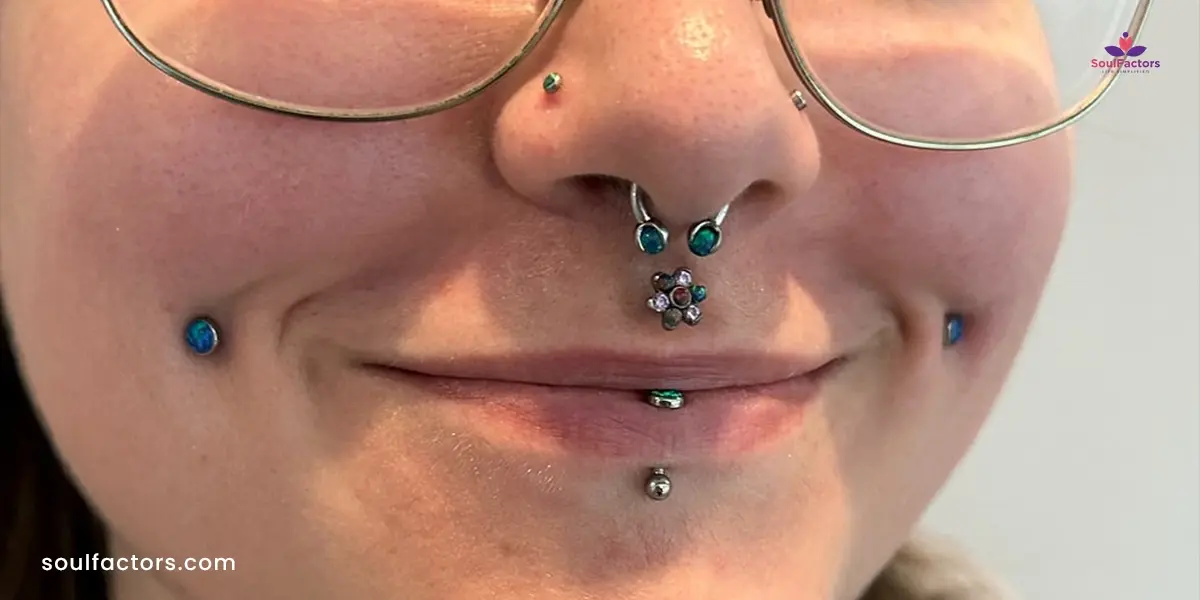
Cheek piercing, also known as dimple piercing, is a trendy form of facial piercing popular among women. This style involves piercing the sides of the face, specifically the cheeks, penetrating through the cheek tissue into the oral cavity. Typically, these piercings are strategically placed to align with the natural dimples or where dimples would form post-piercing. Unlike some other piercing methods, cheek piercing relies on the use of a needle rather than a piercing gun.
It’s important to note that cheek piercings carry a risk of infection, which is why they aren’t as widespread as other piercing types. Women considering this unique form of self-expression should weigh the potential risks and benefits carefully before proceeding.
Types Of Cheek Piercings
You might think that cheek piercings are limited to just one style, placed on the sides of the mouth. However, there are more ways that can make this piercing even more intriguing and enhancing. Let’s explore some alternatives:
Regular Cheek Piercing
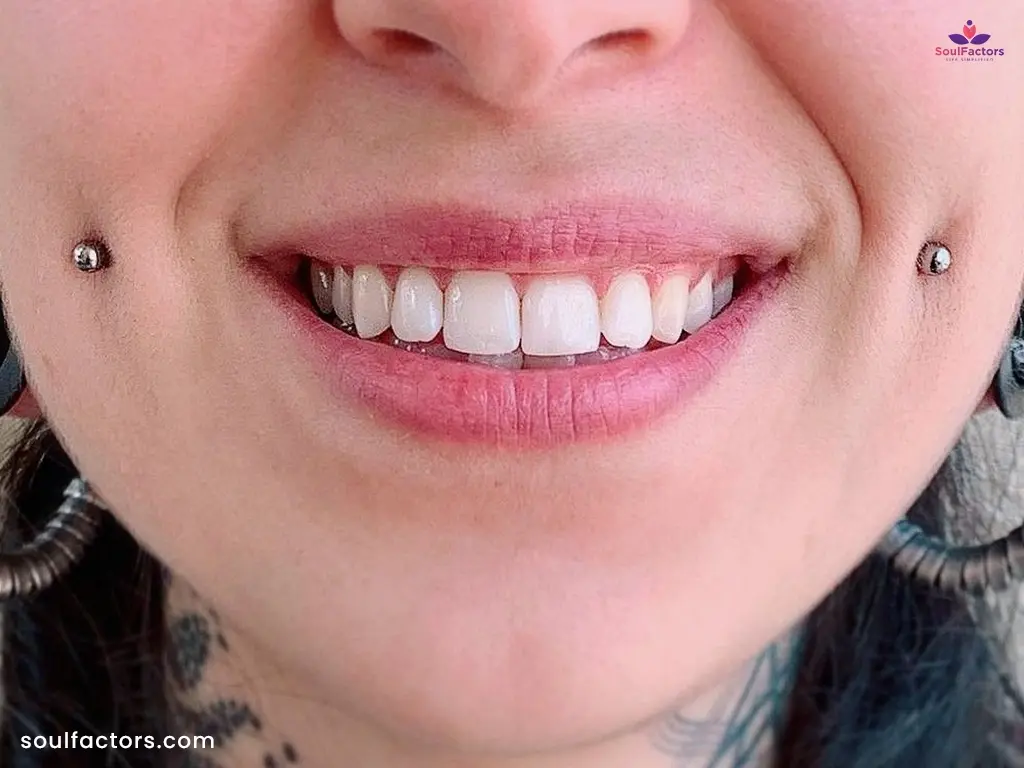
A surface bar is inserted through each cheek to simulate dimples.
Single Cheek Dimple Piercing
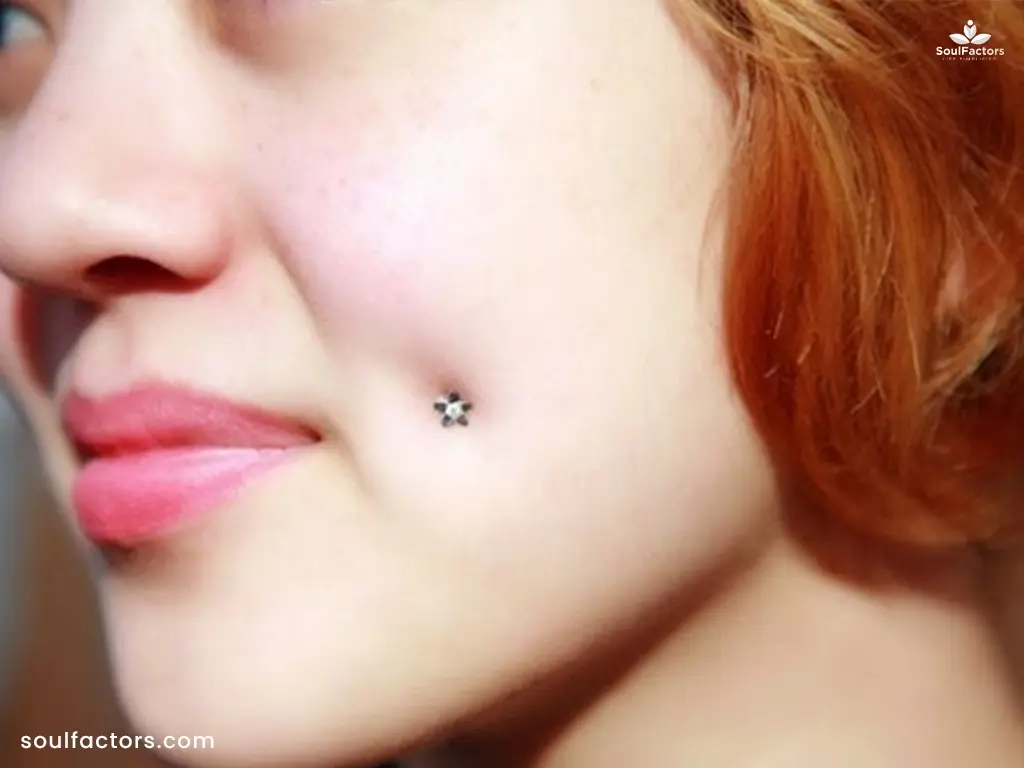
As the term suggests, a single-cheek piercing is done on one side of your cheek. It creates a single dimple illusion.
Dermal Cheek Piercings
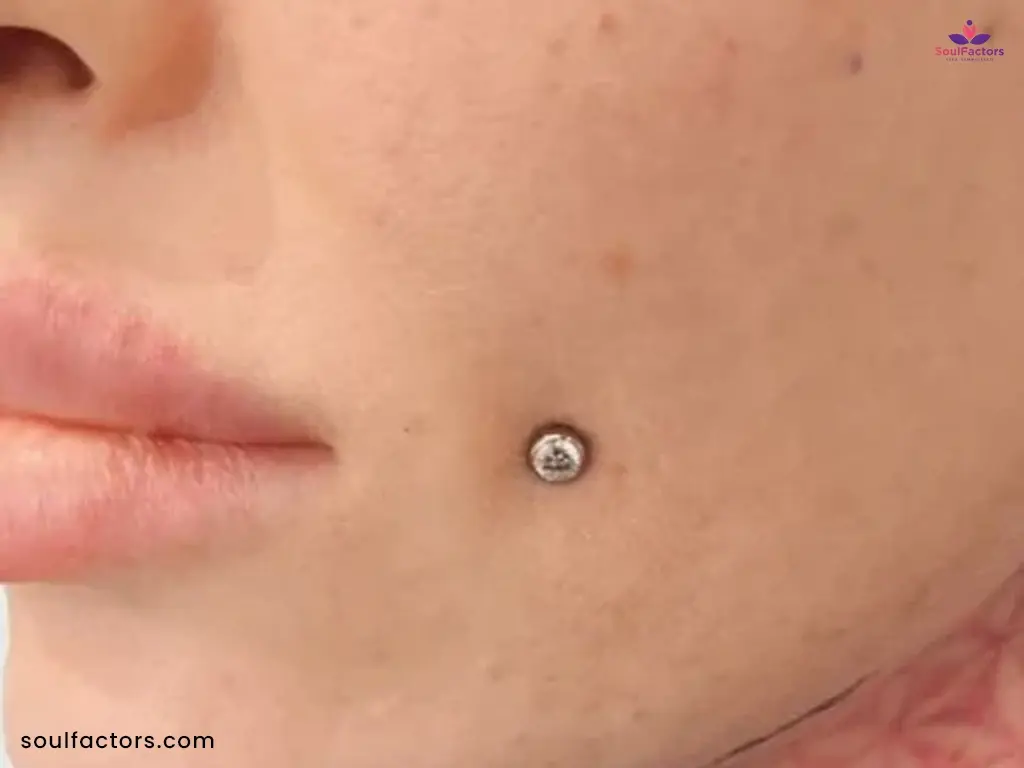
Dermal piercings don’t involve a traditional entry and exit point for the jewelry to pass through. Instead, a dermal anchor is placed on the cheek by the piercer, forming a small hole that penetrates only the middle layer of the skin. The jewelry is then connected to this anchor. It’s essential to be aware that dermal cheek piercings come with a heightened risk of rejection due to their placement in areas prone to frequent movement, like the cheeks. This can lead to potential issues such as infection, swelling, and increased pain.
Cheekbone Cheek Piercing
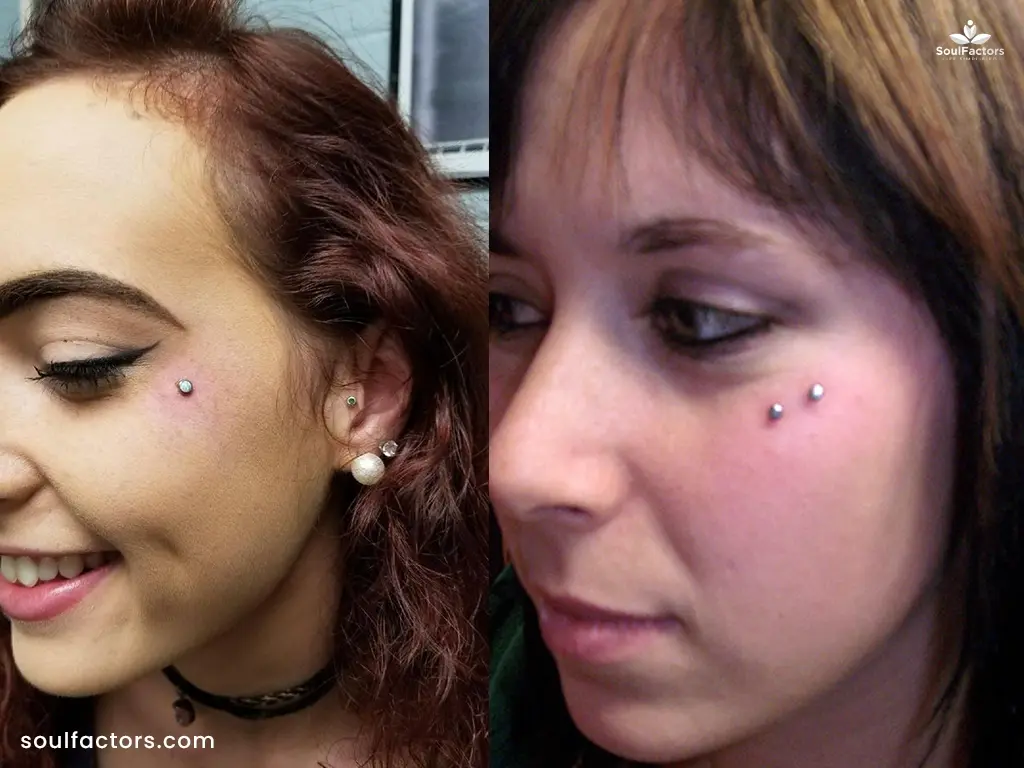
This body piercing is done above the cheekbones. Also known as anti-eyebrow piercing and upper cheek piercing, it is done as a dermal piercing.
Cheek Piercing Procedure
Before starting the process of piercing, the piercer will examine your mouth thoroughly. The positioning of the piercing is located with scrutiny. The piercer also locates sensitive glands such as parotid ducts, a gland responsible for depositing saliva, to avoid any injury.
Once hurt, this gland cannot be repaired.
When determining the placement of the piercing, the piercer marks the spot where the jewelry will be positioned, allowing the individual to visualize the location before the procedure begins. Prior to starting, it’s common for an oral rinse or topical anesthetic to be administered to minimize discomfort.
Using a threaded needle, the piercer may choose to pierce through the cheek from either the inside or outside of the mouth. This method ensures precise placement of the jewelry. Additionally, measures such as using a cork to protect the teeth, managing saliva with ice or a paper towel, and cleansing the area with a saline solution may also be employed for a smoother piercing experience.
Cheek Piercing Pain Level
Pain levels can vary from person to person based on individual pain tolerance. With cheek piercings, since there’s no cartilage like in the upper ear or nose, the pain tends to be relatively low. However, you may still experience some swelling or taste a bit of blood initially. These sensations are temporary and part of the normal aftercare process. As the wound heals, your skin will return to its usual state. Cheek piercing healing time is comparatively less, allowing you to resume activities like chewing and eating without much discomfort. It’s important to keep the piercing clean, especially when traveling, and to visit a dentist for regular check-ups to ensure proper healing and oral health.
Cost Of Cheek Piercing
The price of getting your cheek pierced can vary depending on factors like where you live, the reputation of the studio, and the experience level of the piercer. On average, expect to pay around $70 to $80 per cheek piercing, excluding the cost of the jewelry. For the jewelry itself, you might spend anywhere from $10 to $20, depending on the material you choose.
It’s also important to remember to tip your piercer for their service. A standard tip is at least 20 percent of the total cost, as a gesture of appreciation for their skill and professionalism.
Cheek Piercing Side Effects
It is considered a little more dangerous than other types of piercings because of its proximity to sensitive locations. The parotid gland needs to be protected at all costs from getting injured. Also, the location is such that it is prone to friction like changing clothes, towel-drying the face, and other everyday activities.
There are certain risks and side effects you must be aware of about cheek piercing:
- Scarring: Cheek piercings often leave behind dimple-like scars once the jewelry is removed. While some may embrace these scars as a long-term benefit, others who don’t take extra care to minimize scarring.
- Swelling: Swelling is a typical side effect following a piercing. To mitigate this, it’s recommended to select jewelry with longer bars to prevent the swelling from trapping the jewelry, thus allowing proper cleaning.
- Infection: Infections can occur when bacteria invade the piercing site due to inadequate aftercare or an unsterile environment during the piercing process. Signs of infection include yellow discharge, foul odor, dry mouth, facial pain, and fever, prompting a visit to the doctor for proper treatment.
- Leakage: Cheek piercings may disrupt saliva flow, leading to increased saliva production and potential drooling or leakage at the piercing site.
- Teeth and Gum Damage: Contact between the piercing jewelry and teeth or gums can result in issues such as gum recession, enamel wear, or chipped teeth(2).
- Abscess formation: Piercings can attract abscesses, which are small pockets of pus around the wound area. Medical attention should be sought if an abscess develops.
- Migration or Rejection: Cheek piercings carry a higher risk of migration or rejection due to the extensive muscle structure in the cheeks. Constant facial movement can cause the jewelry to shift from its initial placement (migration) or be pushed out by the body (rejection).
Cheek Piercing Infection
This piercing carries the risk of infection if proper precautions or aftercare are not provided. The following are the symptoms of cheek piercing infection:
- Swelling and redness
- Pain and discomfort
- Pus or discharge
- Foul odor
- Fever
- Difficulty speaking
Precautions To Be Taken While Doing Cheek Piercing
The cheeks are home to big muscles, which means major swelling after the piercing. Not to mention, it’s pretty close to those important saliva glands in your mouth– damage there ain’t reversible, honey!
First things first, find a piercer who’s a total pro and has experience with these tricky cheek jobs. Don’t settle for just anyone! They’ll know exactly how to avoid those sensitive areas and make sure your piercing looks (and heals) just right. On top of that, cheek piercings can leave scars, some even permanent. Take the following precautions to minimize the risk of cheek piercing complications:
- Ensure the piercer’s qualifications and credentials: Prioritize researching piercers in your vicinity, selecting those with ample experience and expertise. Inquire about their past work with cheek piercings and verify their licensing or certifications to ensure safety and quality.
- Go make-up-free: Before your cheek piercing appointment, thoroughly cleanse your skin, ensuring it’s free from makeup or skincare products. This step minimizes the risk of bacterial infection during the piercing process.
- Maintain hygiene routines: Implement a rigorous oral hygiene regimen, including mouthwash recommended by your piercer or dentist, to keep the piercing site clean both internally and externally.
- Prioritize rest: Following the piercing, allow yourself adequate rest and refrain from activities like traveling that may irritate the piercing area. Additionally, avoid engaging in oral sexual activities until the piercing has fully healed to prevent complications.
- Avoid jewelry changes: Refrain from changing the jewelry for a minimum of 8 to 12 weeks after the piercing. Doing so can exacerbate pain and prolong the healing process for cheek piercings, compromising aesthetics and increasing the risk of complications.
Cheek Piercing: Aftercare Tips
Your piercer will provide you with aftercare tips. They might also suggest certain aftercare products. Here is a list of basic aftercare tips that you should follow after getting cheek piercings:
- Cleanliness is Key: Before touching your piercing, wash your hands thoroughly with soap and water to prevent any potential infections.
- Saline Solution Soaks: Clean your piercing with saline solution at least three to four times a week. You can use a saline spray or soak to keep the area clean and free from bacteria.
- Sea Salt Mouthwash: Maintain the cleanliness of your dimple piercing by rinsing your mouth with a sea salt solution (1/4 teaspoon sea salt dissolved in 1 cup of warm, sterile water) twice a day for five minutes each time.
- Gentle Drying: After washing your face, pat it dry with a clean paper towel to avoid introducing bacteria to the piercing site.
- Sleeping Position: Try to sleep on your sides to prevent putting pressure on the piercing while it heals.
- Clothing Choice: Opt for loose-fitting clothing that won’t rub against your piercing and cause irritation.
- Healthy Lifestyle: Promote healing by getting quality sleep, eating nutritious foods, and staying hydrated.
- Avoid Smoking: Nicotine can slow down the healing process, so it’s best to avoid smoking until your piercing is fully healed.
- Hands Off: Refrain from touching your jewelry unnecessarily to minimize the risk of introducing bacteria to the pierced area.
- Avoid Chemical Products: Steer clear of chemical makeup and skincare products, especially those labeled “For External Use Only,” until your piercing has healed.
- Prevent Trauma: Avoid activities that could cause trauma to the piercing area, such as vigorous brushing or playing with the jewelry.
- Limit Certain Foods: Stay away from spicy, acidic, crunchy, sticky, or chewy foods that could irritate the piercing site.
- Moderate Cleaning: While it’s essential to keep the piercing clean, avoid overcleaning, as it can trigger irritation.
- Patience with Jewelry: Resist the urge to change your jewelry prematurely; allow the piercing to heal completely before making any alterations.
Cheek Piercing Jewelry
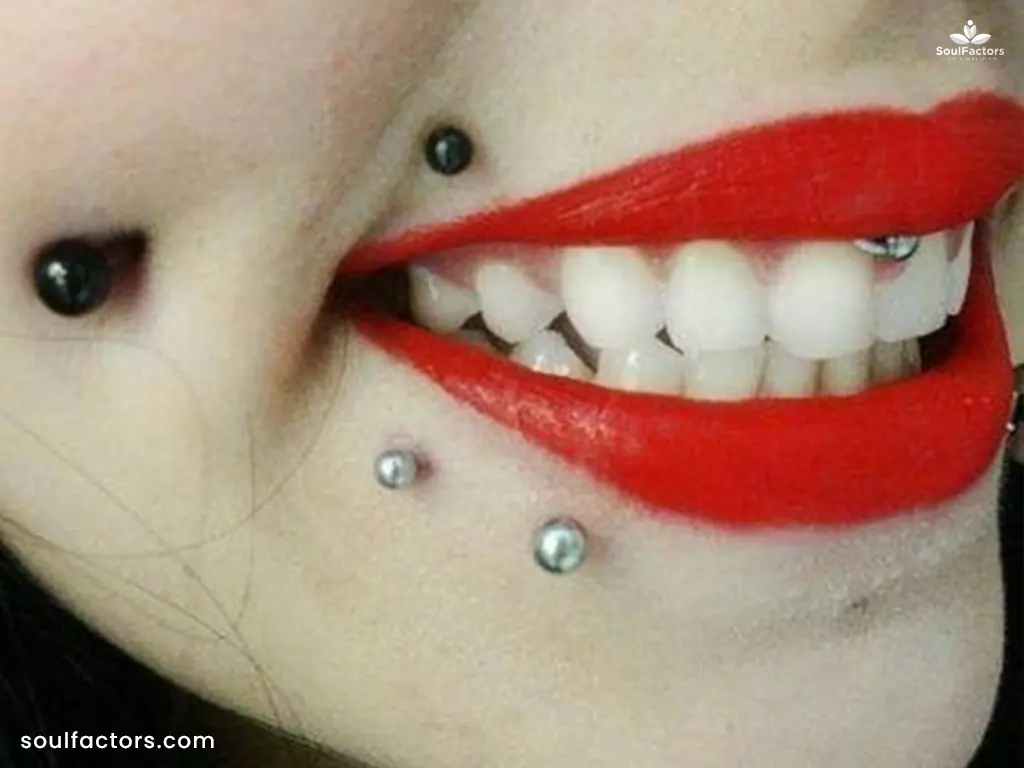
The following are the jewelry options for cheek piercing:
- Labret studs: These are pieces of jewelry designed with a flat surface on one end, which rests against the inside of the cheek, while the decorative part remains visible on the outside.
- Barbells: These jewelry items feature decorative elements on both ends. However, it’s worth noting that barbells may not be recommended since they have the potential to rub against the inside of the mouth, possibly causing irritation to the teeth or tongue.
Other jewelry options include captive bead rings, micro labret studs, and dermal tops (for dermal piercing).
FAQs
The piercing on your cheek is typically called a cheek piercing or dimple piercing.
This piercing falls lower on the pain scale. It is less painful than cartilage piercing.
It can cause permanent dimples once the jewelry is removed due to scarring and tissue damage.
These piercings do not heal fully, they might leave permanent scars.
It takes 8 to 12 weeks to heal.
The easiest way is by using concealer and foundation.
Yes, the body can reject this piercing considering it as a foreign object in some cases. Dermal piercing generally has a higher risk of rejection than bar piercing due to the former’s partial placement beneath the skin.
It can swell extensively because it sits amidst a large muscle group.
There is no standard timeline on how long cheek dermal piercing lasts. It depends on how well you take care of your piercings.
Yes, full cheek piercings tend to leak.
Yes, a cheek-piercing hole heals with time but it can leave a permanent scar on your cheeks.
Yes, it might bleed slightly for a few days. However, it is advised to seek medical help if the bleeding lasts for more than a few days.
Cheek piercings stay in place through careful placement of the jewelry, which is threaded through a hole created by a skilled piercer. The surrounding tissue heals around the jewelry, anchoring it securely in the cheek.
The cons of cheek piercings can include risks such as potential infection, swelling, scarring, gum and tooth damage, and the possibility of jewelry rejection or migration due to the movement of facial muscles.
The average size is 22 – 24 mm for a cheek piercing jewelry..
The Bottom Line
Dimple piercings offer a bold and eye-catching aesthetic that can set you apart. However, it’s essential to recognize that they involve creating permanent holes in your face. Before making a significant change to your facial features, be certain that you’re committed to getting a cheek piercing. It’s also worth noting that, unlike some other piercings, cheek piercings can leave lasting scars on your face.
When done with care and style, cheek piercings can add a unique and fashionable touch to your look. Just remember, listen to your body, follow the aftercare rules religiously, and don’t be afraid to consult your dentist if you have any concerns. You’ll rock your piercing!

Subscribe to Newsletter
Elevate your routine, stay on trend, and embrace a personalized beauty journey with our curated insights.


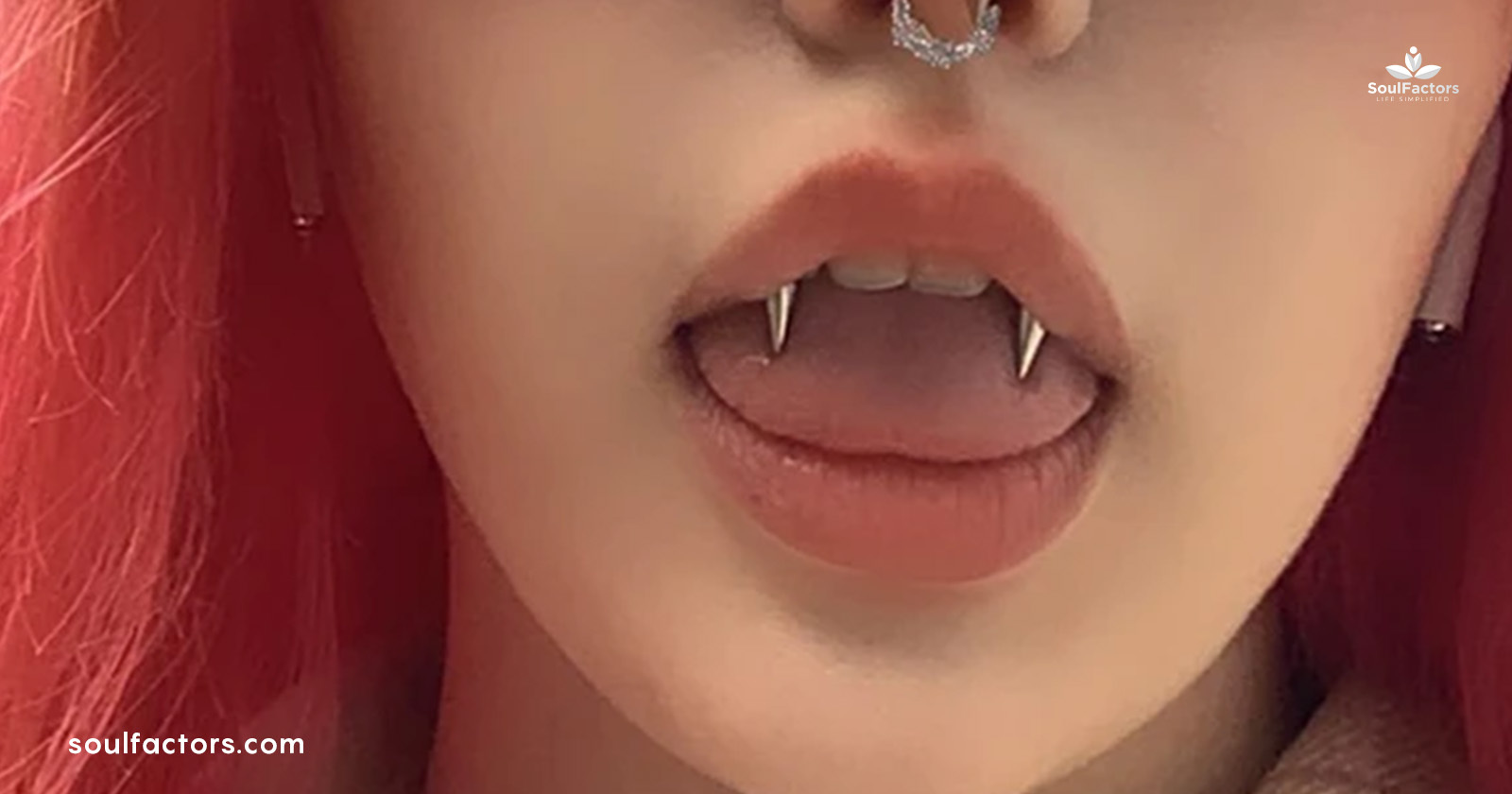
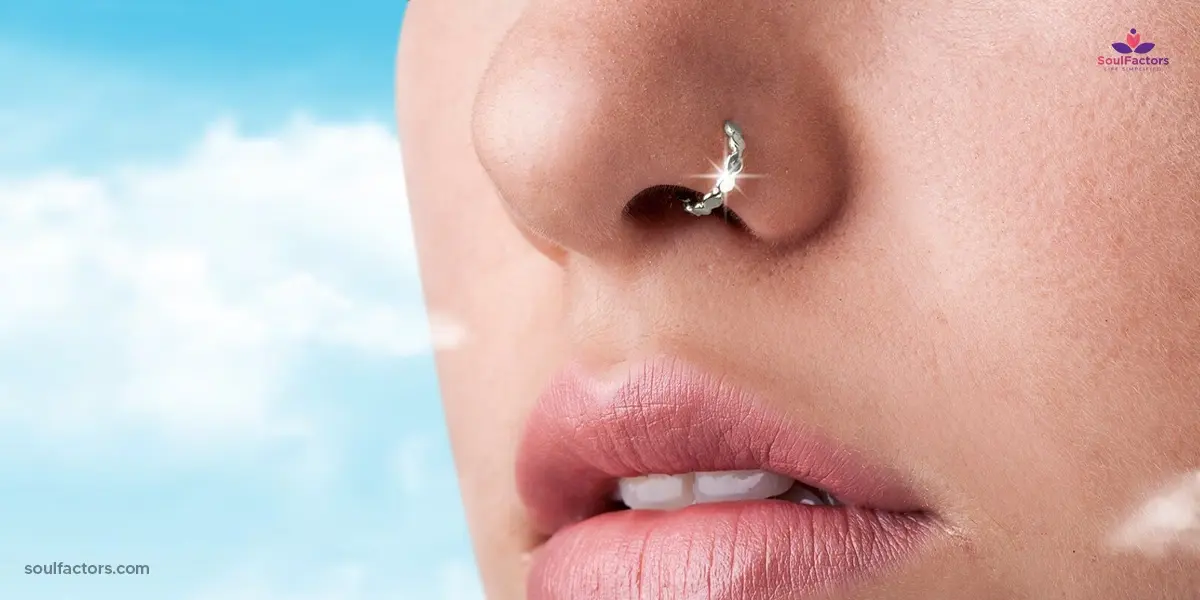
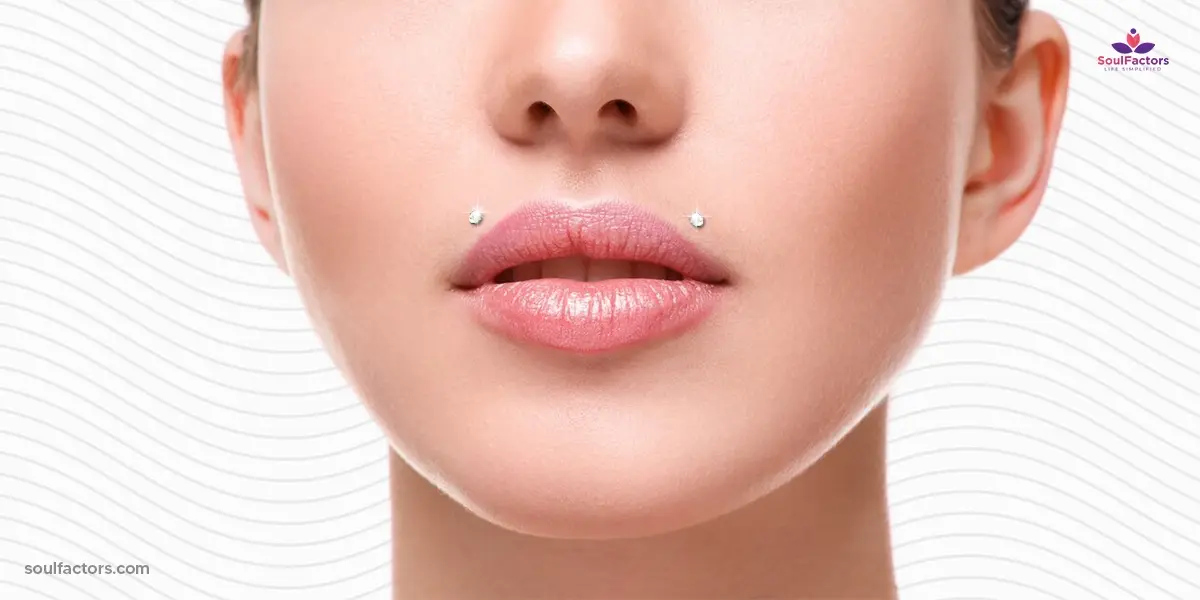
Write a Comment